Kristine Hughes's Blog, page 152
April 18, 2011
Julian Fellowes Writes Titanic Screenplay for ITV
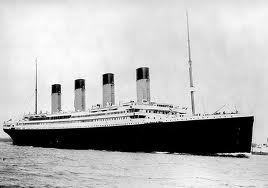
According to The Daily Telegraph, Julian Fellowes has been tapped to write a screenplay about the Titanic disaster to be aired in two years' time by ITV to mark the centenary of the ship's sinking. Fellowes, who also penned Downton Abbey, Gosford Park and The Young Victoria, explained that he wants to approach the subject in a different way from James Cameron's 1997 movie.
He also suggested that he wants to portray the British people on board the ship in a more sympathetic light.
"Far be it for me to buck a Hollywood tradition, but I think that those generalisations [about British people] are not as interesting as real life," Fellowes said. "Obviously, the special effects of the Cameron version can't be rivalled on television, but what we can offer, and what we are hoping to offer, is a much more human version of the story."
He added: "Ours is more a tale of the people on board told from the perspective of the different classes and the crew. We are using real characters and fictional characters, but we develop the real as much as the fictional."

Perhaps Fellowes's remarks were prompted by David Warner, who played the villainous manservant in the 1997 Titanic film, who complained that English actors were typecast as the baddies. "There wasn't a single good character in Titanic who was English, and this is typical," said the actor.
"Americans who have travelled and who have English friends know we are not necessarily all baddies, but I think that seeing us being so incessantly nasty on screen has a drip, drip, drip effect on the rest of them."
He added that, with one or two exceptions, heroic English figures were almost always played by non-English actors. "Even Hornblower was played by Gregory Peck. Daniel Craig is a rare English Bond – normally one can expect an Irishman, a Scotsman or even an Australian."
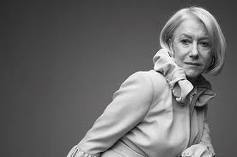
Warner's comments echoed those of Dame Helen Mirren. She felt the need to tell an audience in Los Angeles in April: "We're not the snooty, stuck-up, malevolent, malignant creatures as we're so often portrayed."
Dame Helen insisted: "We're actually kind of cool and hip."
The latest Titanic adaptation will feature actors Linus Roache and Geraldine Somerville heading a cast that also includes Celia Imrie, Toby Jones and Perdita Weeks. It begins filming in Hungary later this month, made by Bafta-winning producer Nigel Stafford Clark, whose successes have included Bleak House and Warriors.
Published on April 18, 2011 00:57
April 16, 2011
In Memoriam: The Titanic
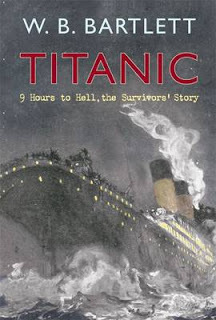
On this, the 99th anniversary of the sinking of the luxury liner Titanic, we have yet another book out on the disaster, but one that promises to be more logical than lurid in it's approach to the already well churned material surrounding the tragedy.
The latest book is Titanic: Nine Hours to Hell - The Survivor's Story by W.B. Bartlett. The publishers blurb for the book call it: "A major new history of the disaster that weaves into the narrative the first-hand accounts of those who survived. It was twenty minutes to midnight on Sunday 14 April, when Jack Thayer felt the Titanic lurch to port, a motion followed by the slightest of shocks. Seven-year old Eva Hart barely noticed anything was wrong. For Stoker Fred Barrett, shovelling coal down below, it was somewhat different; the side of the ship where he was working caved in. For the next nine hours, Jack, Eva and Fred faced death and survived. They lived, along with just over 700 others picked up by 08.30 the next morning. Over 1600 people did not. This is the story told through the eyes of Jack, Eva, Fred and over a hundred others of those who survived and either wrote their experiences down or appeared before the major inquiries held subsequently. Drawing extensively on their collective evidence, this book weaves the narrative of the events that occurred in those nine fateful hours. The stories of some are discussed in detail, such as Colonel Gracie, a first-class survivor, and Lawrence Beesley, a schoolteacher, who both wrote lengthy accounts of their experiences. No less fascinating are the accounts of those who gave gripping evidence to the inquiries, people like the controversial Lady Lucille Duff-Gordon, steward John Hart who was responsible for saving the lives of the majority of the third-class passengers who lived, or Charles Joughin, the baker, who owed his survival to whisky. This is their story, and those of a fateful night, when the largest ship ever built sank without completing one successful voyage."
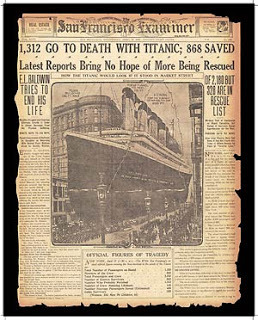
David Randall, of The Independent, said in his review of the book, ". . . The centenary of the sinking of the Titanic looms, and, with it, the prospect of book after book marking the anniversary. This is, even for mild obsessives of the saga such as myself, not altogether to be welcomed. Our shelves already overflow with volumes about the ship, and we have long since discovered that new books on the subject are liable to be written to prosecute ever more arcane theories. So it was with some foreboding that I opened Mr. Bartlett's offering. What cock-eyed "revelation" would he be peddling?
"Er, none. Instead, we have here quite the best and most level-headed telling of the whole story I have ever read. What makes it so is not just that Bartlett can, unlike the authors of many Titanic books, actually write; but that he brings to the controversies which still surround the sinking a judicial sense of what constitutes conclusive evidence, and what does not. He makes plain that the recollections of survivors are so varied (and often conflicting) that some of the more bitter controversies (such as the role of the SS Californian, five miles away or 19, depending on whom you believe) are only kept going by taking the word of some and ignoring the testimony of all the rest."
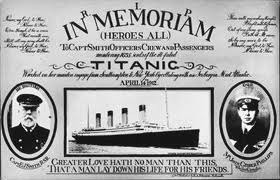
Published on April 16, 2011 22:43
The Omnipotent Magician: Lancelot 'Capability' Brown 1716-1783 by Jane Brown
 Victoria, here. UK magzines, newspapers and blogs have covered the recent publication of a new biography of Lancelot Brown by renowned garden historian and biographer Jane Brown. John Phibbs in his Country Life review assures us that they are not related. But they certainly could be, for they share a remarkable knowledge of gardens and gardening. Ms. Brown will be making an appearance at Hay-on-Wye, among other festivals and meetings. Alas, I will not be able to see her in person. But I intend to send for the book, which can be ordered in $$ through Amazon.com or direct in pounds from many booksellers.
Victoria, here. UK magzines, newspapers and blogs have covered the recent publication of a new biography of Lancelot Brown by renowned garden historian and biographer Jane Brown. John Phibbs in his Country Life review assures us that they are not related. But they certainly could be, for they share a remarkable knowledge of gardens and gardening. Ms. Brown will be making an appearance at Hay-on-Wye, among other festivals and meetings. Alas, I will not be able to see her in person. But I intend to send for the book, which can be ordered in $$ through Amazon.com or direct in pounds from many booksellers.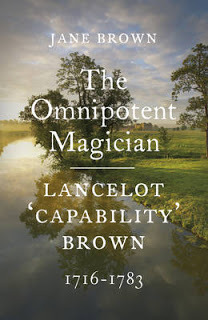
I looked in vain for an author's website. Judging from the number of books she has written, I assume she has little time for websites, blogs or social media. Can't say I blame her. One can spend (waste?) hours on Facebook, though I must say I enjoy (almost) every moment I spend writing blog posts. Below, since I haven't read it yet, the description of the book from the publisher:
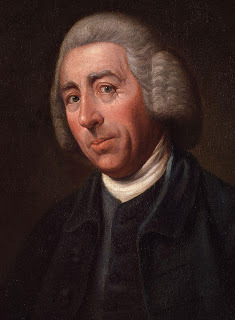 Capability Brown, by Nathaniel Dance
Capability Brown, by Nathaniel Dance ca.1769 National Portrait Gallery"Lancelot Brown changed the face of eighteenth-century England, designing country estates and mansions, moving hills and making flowing lakes and serpentine rivers, a magical world of green. This English landscape style spread across Europe and the world. At home, it proved so pleasing that Brown's influence spread into the lowland landscape at large, and into landscape painting. He stands behind our vision, and fantasy, of rural England.
In this vivid, lively biography, based on detailed research, Jane Brown paints an unforgettable picture of the man, his work, his happy domestic life, and his crowded world. She follows the life of the jovial yet elusive Mr Brown, from his childhood and apprenticeship in rural Northumberland, through his formative years at Stowe, the most famous garden of the day. His innovative ideas, and his affable and generous nature, led to a meteoric rise to a Royal Appointment in 1764 and his clients and friends ranged from statesmen like the elder Pitt to artists and actors like David Garrick. Riding constantly across England, Brown never ceased working until he collapsed and died in February 1783 after visiting one of his oldest clients. He was a practical man but also a visionary, always willing to try something new. As this delightful, and beautifully illustrated biography shows, Brown filled England with enchantment – follies, cascades, lakes, bridges, ornaments, monuments, meadows and woods – creating views that still delight us today."
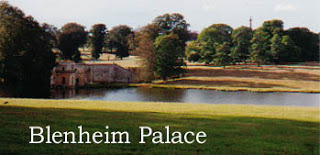
I have visited many of the country houses for which Brown created landscapes and though I love to look at them, I always feel my photographs are inadequate to show the sweep and grandeur of the landscape. It always looks so natural. Which is, of course, the point. As some of his contemporaries observed, Brown improved on what God had left a little undone. Though he came from a modest background, Brown advised kings and princes and dukes on how to arrange their estates. And in large part, his vision has remained intact at some of the UK's most visited gardens, such as Stourhead, Blenheim and Stowe.
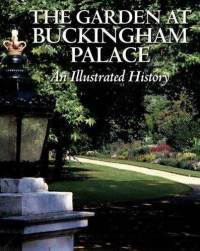
Ms. Brown has also written about some gardens we may see only very rarely. From its origins as a mulberry garden in the time of Samuel Pepys, this volume tells the illustrated story of the largest private garden in London, which, from time to time, is open to selected audiences and even concert-attendees. Hundreds of photos are included of the garden at all times of the year, by photographer Christopher Simon Sykes.
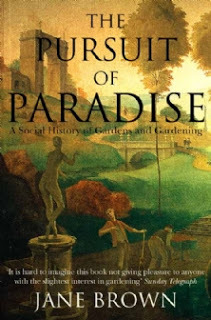
In The Pursuit of Paradise Gardening, published in 2000, Ms. Brown takes the broadest possible approach. 'The most enchanting, erudite and thought-provoking book on the subject to be published for many years' wrote Amanda Craig, in the Independent on Sunday when it first came out. Ruth Gorb, in the Guardian, wrote 'Be warned. This is a rich brew, not to be taken in one gulp. Gardening in this book encompasses science and history, philosophy and art, literature and the military, politics and sex… it is all tremendous fun.'
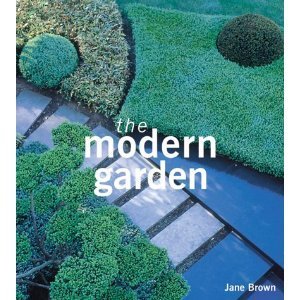 Jane Brown writes about contemporary gardens too. This 2001 volume has been widely praised.
Jane Brown writes about contemporary gardens too. This 2001 volume has been widely praised.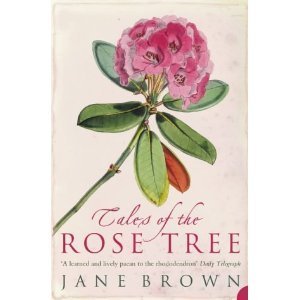 Tales of the Rose Tree: Ravishing Rhododendrons And Their Travels Around the World, out in 2009, tells the story of how cultivation of these magnificent plants, which have more than a thousand variations, have spread around the globe. Anyone who has had the privilege of walking through a garden filled with rhododenrons in full bloom will be eager to find out more about this adaptable favorite.
Tales of the Rose Tree: Ravishing Rhododendrons And Their Travels Around the World, out in 2009, tells the story of how cultivation of these magnificent plants, which have more than a thousand variations, have spread around the globe. Anyone who has had the privilege of walking through a garden filled with rhododenrons in full bloom will be eager to find out more about this adaptable favorite.
Above is one of snaps I took at Bowood in Wiltshire of their extensive rhodenron gardens in May 2009. It was a perfect fairyland and we wandered for hours.
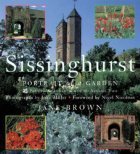
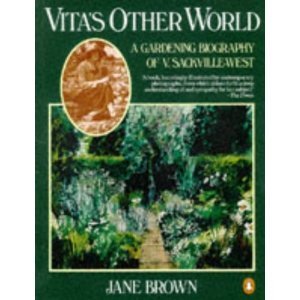
Finally, before I run out of enthusiastic adjectives to describe the wonderful books of Jane Brown, I will mention her biographies of Vita Sackville-West as a gardener and her enchanting garden at Sissinghurst. I can see I have a lot of reading to do...and pictures to enjoy. Jane Brown's booklist is longer than I have presented, but I will leave further discoveries to your personal search for now.
Published on April 16, 2011 02:00
April 15, 2011
Regency Reflections: A Visit to Regency London Part One
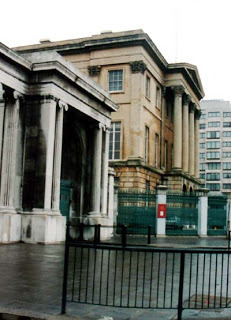 Victoria here, inviting you to come with me to Regency London! Do not forget to don your special eyeglasses, the ones that will eliminate all evidence of city development after 1820 or so, including Victorian remodeling, post-Blitz reconstruction, contemporary skyscrapers, autos and buses, and modern clothing.
Victoria here, inviting you to come with me to Regency London! Do not forget to don your special eyeglasses, the ones that will eliminate all evidence of city development after 1820 or so, including Victorian remodeling, post-Blitz reconstruction, contemporary skyscrapers, autos and buses, and modern clothing. Substitute for horns, diesel engines and ever-present sirens the clip clop of hooves, the squeaking of cart-wheels and the cries of peddlers and hawkers of milk, eel pies, fresh buns: "Who will buy my ...."
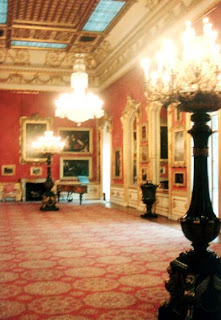 We shall start at the old address, No. 1 London (above), the site of Apsley House, home of the Duke of Wellington. The original Adam house was re-faced in Bath stone in the Victorian era; the Duke entertained here, particularly at the Battle of Waterloo annual anniversary banquet, beginning in the appropriately named Waterloo Gallery.
We shall start at the old address, No. 1 London (above), the site of Apsley House, home of the Duke of Wellington. The original Adam house was re-faced in Bath stone in the Victorian era; the Duke entertained here, particularly at the Battle of Waterloo annual anniversary banquet, beginning in the appropriately named Waterloo Gallery.I will not go into raptures over Apsley and its treasures -- we have done that before on this blog. In fact, several times. Try 1/19/11 and 7/13/10. And visit the website
here. But keep in mind that neither the exterior nor the interior are original. While the exterior was remodeled before 1820, the interiors reflect more of the tastes from the Victorian era.
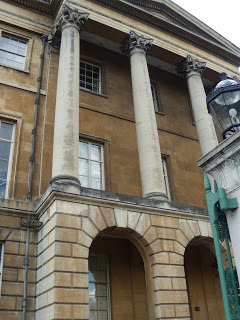 Here is the entrance, as it was refaced in Bath Stone after the Duke purchased Apsley House from his brother Richard, Marquess of Wellesley, in 1817. Originally the house was smaller and finished in red brick.
Here is the entrance, as it was refaced in Bath Stone after the Duke purchased Apsley House from his brother Richard, Marquess of Wellesley, in 1817. Originally the house was smaller and finished in red brick.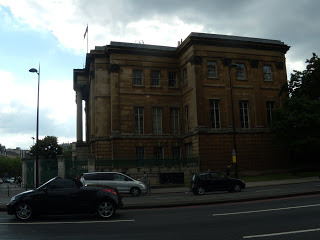
The map below shows the route we will take on this visit to Regency London. We start at Apsley House, approximately at A on the map, which is the tube stop just outside of Apsley House. The layout of the streets in 2011 is quite different from 1811. Today the broad boulevard of Park Lane (in green) connects with Piccadilly and other streets in a dizzying traffic circle. Apsley House is entirely cut off from the other streets, and the buildings that stood beside it were long ago demolished. The rather dark picture above shows how Apsley House stands isolated behind all the traffic.
Today it sits in the eastern most part of Hyde Park. From Apsley, we will walk in a generally easterly direction toward B on the map, which is Piccadilly Circus, also non-existent in 1811. Along Piccadilly, we will see a few remnants of the Regency Era and just before we get lost in Piccadilly Circus, we will retrace our steps to the top of St. James Street (on the map a tiny bit to the right of the Green Park tube sign) and walk down (southerly) St. James Street until it ends at -- what else? -- St. James Palace, beyond Pall Mall.
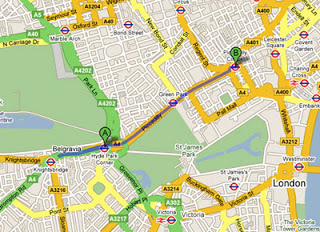
On the south, or right side of Piccadilly (as you head toward today's Piccadilly Circus) is Green Park, open space which resembles the way it looked in 1811. On the north, or left hand side of Piccadilly are solid banks of buildings most dating from later than the early 19th century, with a few exceptions. Gone is Devonshire House which once welcomed London's aristocracy and royalty. It was demolished in 1924. Below is a picture from The Queen in 1896.
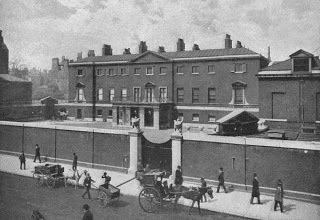
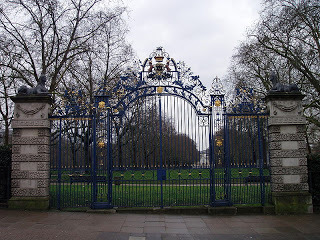 Above is a photo from Wikipedia taken in 2010, more recent than any of mine, of the gates of Devonshire House which now serve as an entrance to Green Park, almost across Piccadilly from their original location.
Above is a photo from Wikipedia taken in 2010, more recent than any of mine, of the gates of Devonshire House which now serve as an entrance to Green Park, almost across Piccadilly from their original location.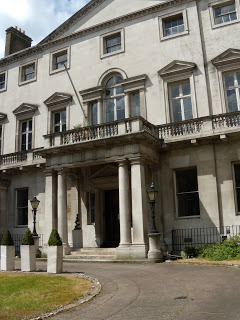
Above is a building variously known as Cambridge House and the former In and Out Club. This imposing house was built in the mid 18th c. for the 2nd Earl of Egremont. It was later owned by the 1st Marquess of Cholmondeley and then by Prince Adolphus, Duke of Cambridge. From 1855 to 1865, it was known as Palmerston House, where Lord Palmerston, Prime Minister, and his wife, Emily, Lady Palmerston (nee Lamb, formerly Countess Cowper) entertained and conducted much of the business of the government. In the 20th century, it became the Naval and Military Club, often called the In and Out Club, after the large signs on the pillars in front of the courtyard. In 1996, the Naval and Military Club moved to different premises in St. James Square. The building has been empty since then, though a number of schemes have been proposed, including use as a hotel and/or gambling casino. It is a Grade I listed building, which means that few changes can be made in its architecture or decor. If you have an idea for it, I'm sure the owners would entertain almost any suggestion. Bring your checkbook.
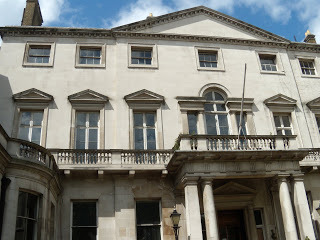
Moving eastward, and also on the north side of the street, we arrive at Burlington House, now the home of the Royal Academy of Art. There are remnants of the Regency era building here, but the exterior and much of the interior are greatly altered, not to mention the artwork in the courtyard.
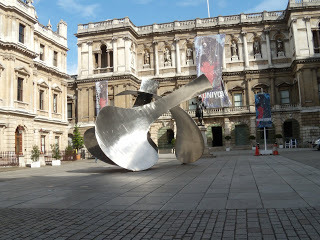
The house and its grounds were remodeled by the same Lord Burlington that designed and built Chiswick House in grand Palladian Style. Like many of the mansions on Piccadilly and in Mayfair, it used to have gardens, extensive courtyards, stable blocks, all the accouterments of country mansions -- which they once were. As the West End became more and more desirable, these gardens and most of the courtyards were built over.
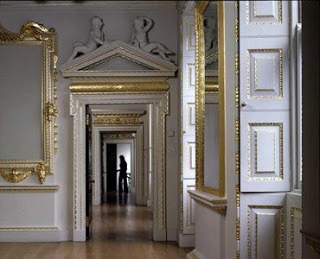
Above are the John Madejski Fine Rooms in the Royal Academy, which have been restored close to their appearance in the 18th century. These rooms are often open without charge to visitors and display portraits of RA members such as Reynolds and Gainsborough. The other galleries have been greatly altered from the original and house changing exhibitions.
Next door, we find Albany where so many famous Regency gentlemen (not to mention numerous fictional heroes) lived. The house was once the home of Lord and Lady Melbourne, then the Duke of York, before it was converted to apartments. Byron had rooms here, as did (much later) Georgette Heyer. Below, two views of Albany, from the front and the side. Across Piccadilly is Hatchard's Book Shop.
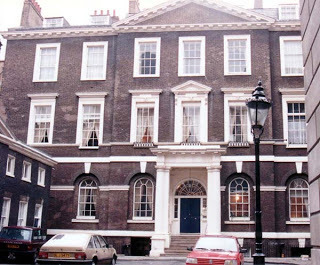
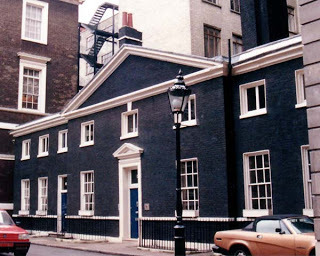
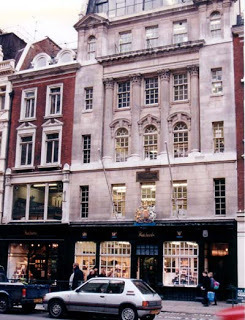 Hatchards Book Store, 187 Piccadilly, Est. 1797
Hatchards Book Store, 187 Piccadilly, Est. 1797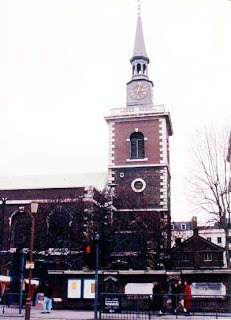
A bit farther east on Piccadilly (assuming you can tear yourself away from all the tempting titles at Hatchards) is St. James Church, 197 Piccadilly, built in 1684 and designed by Sir Christopher Wren. Its interior has many carvings by Grinling Gibbons, and despite some renovations in the 19th and 20th centuries, it is much as it appeared during the Regency.
Now retrace your steps past Hatchards and walk to Fortnum and Mason, on the corner of Piccadilly and Duke Street. Although it began in 1707 in St. James Market, the large building is modern. Nevertheless, you may want to sample one of the restaurants or at least take home a catalogue of their mail-order wares. Visit the website here.
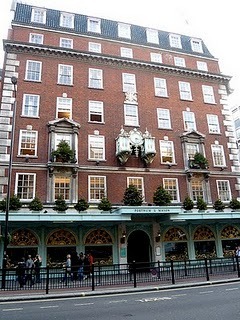 Fortnum and Mason, 181 Piccadilly, est. 1707Proceed westerly to the corner of St. James Street and turn left, or south. At the bottom, you will see St. James Palace, as I photographed it from a distance.
Fortnum and Mason, 181 Piccadilly, est. 1707Proceed westerly to the corner of St. James Street and turn left, or south. At the bottom, you will see St. James Palace, as I photographed it from a distance.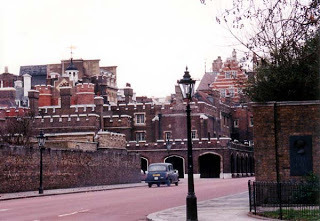
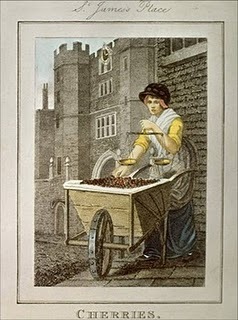 Charming print of cherry seller outside St. James Palace, c. 1811
Charming print of cherry seller outside St. James Palace, c. 1811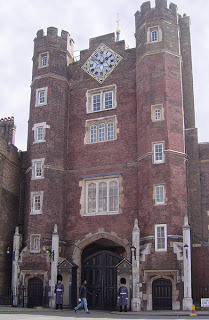 Today's view of St. James
Today's view of St. James
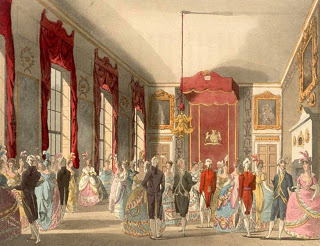
From Ackermann's Microcosm of London, the scene at a drawing room in St. James Palace in 1808. St. James Palace was the official residence of the King. Even today, foreign ambassadors serve at the Court of St. James, though they are received by the Queen at Buckingham Palace.
On your walk from Piccadilly to St. James Palace, most of the buildings you pass were constructed later than the Regency, but not all, for here are several of the famous men's clubs of St. James and several shops with roots in the era.
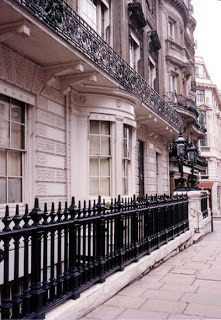 Whites
Whites
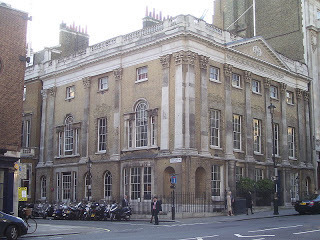 Brooks Club
Brooks Club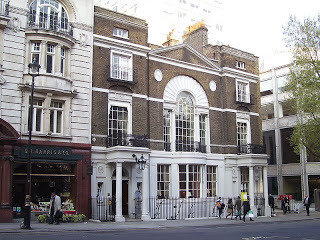 Boodles Club
Boodles Club
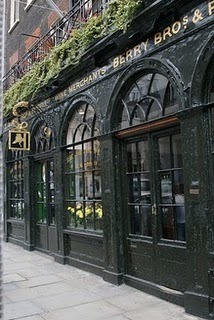 Berry Bros. and Rudd, Wine Merchants, est. 1698
Berry Bros. and Rudd, Wine Merchants, est. 1698 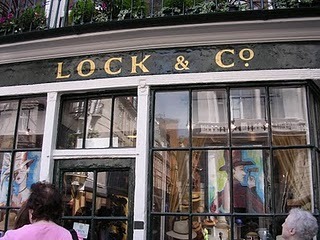 Lock and Co. Hatters, est.1676
Lock and Co. Hatters, est.1676 We will take a further jaunt around the Regency in the St. James area soon.
Published on April 15, 2011 02:00
April 14, 2011
On The Shelf - Discovering New Authors - R. F. Delderfield
 Victoria, here. When starting a new post on Discovering New Authors for our readers, I decided to go back to one of my old favorites, R. F. Delderfield. And in doing so, I have found a bunch of novels he wrote that I haven't read. Hallelujah!!! Lots of fun to come.
Victoria, here. When starting a new post on Discovering New Authors for our readers, I decided to go back to one of my old favorites, R. F. Delderfield. And in doing so, I have found a bunch of novels he wrote that I haven't read. Hallelujah!!! Lots of fun to come. Ronald Frederick Delderfield (1912-1972) was born in London and was anything but an aristocrat. His father supported causes like women's suffrage and temperance, becoming active in politics and eventually co-owner and editor of a newspaper in Exmouth, Devon. Delderfield started work at the paper in 1929 and had his first play produced in Birmingham in 1936. After the war, he wrote more dramas and continued his reporting.
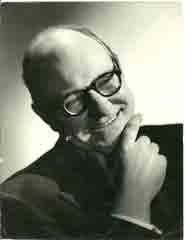
His first novel, Seven Men of Gascony, published in 1949, is the story of seven soldiers in Napoleon's army up to and including the Battle of Waterloo. Makes my eyes dance just to think of it.
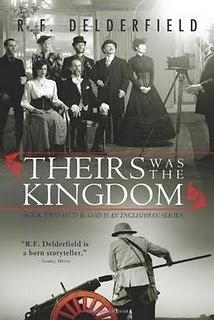
Two Few For Drums (1964) tells of British soldiers in the Peninsular War in Portugal. A young and inexperienced officer must lead his squad through enemy territory to rejoin Wellington's army. Oh, another joy awaiting.

I remember Delderfield's books from the paperback library of my father, who prided himself on his English heritage and was always eager for more books by favorite English authors. I believe I read the Swann trilogy when they were high on the NY Times bestseller list in the early 70's.

Recalling the titles from 1970-73: God is an Englishman, Theirs Was the Kingdom, and Give Us This Day, brings back some dim memories of long, enjoyable summer afternoons at the lake. These titles were recently re-issued by Sourcebooks.
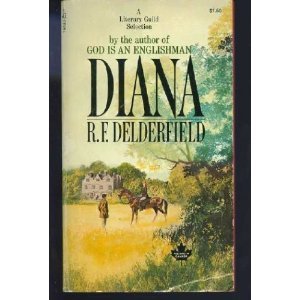
In the year of his death, Delderfield's autobiography For My Own Amusement came out. I am eager to read this, and from reports, it is written in his straight-forward, detailed and often funny style. So I will get busy at the library and/or on the used book sites to find these volumes.
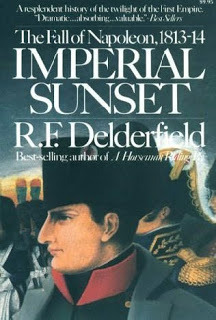
I also remember reading Diana (1960-62), and another trilogy A Horseman Riding By (late 60's): Long Summer's Day, Post of Honour and The Green Gauntlet.
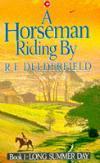
Now all I have to do is decide where to start, on the books I haven't yet read or to re-read the old favorites. But wait!! There's more!!
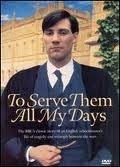
As I check around, I am finding that several of the books and series have been done on film or tv! Oh, wonderful. I can rent or buy them on DVD too. How did I miss them the first time around?
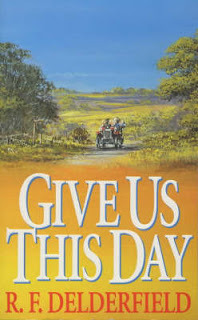
Here is my advice: If you haven't yet sampled R. F. Delderfield, get cracking. Start with whatever you can can get your hands on fastest, and settle in for a comfortable read. These are not breathless thrillers nor passion-sparked eroticism, nor are they stories of princesses or sheikhs or billionaires. They are good, old-fashioned sagas with long descriptive passages and meandering plots. But if you love English history and a good meaty read, I predict you will love R. F. Delderfield.
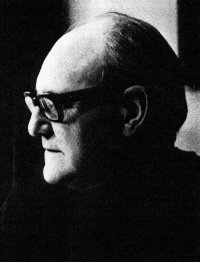 Ronald Frederick Delderfield 1912-1972
Ronald Frederick Delderfield 1912-1972
Published on April 14, 2011 02:00
April 13, 2011
Your Lover's Eye
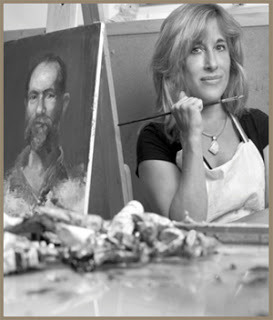
Through artist Victoria Carlin, the tradition of painting lover's eyes survives in the 21st century. Recently, guest blogger Jo Manning did a series of posts on lover's eyes for us and explained their history and the story behind these cherished keepsakes. Today, the cost of purchasing these antique eyes is astronomical, but through Victoria's brush, you can now have a portrait done of your own, or your lover's, eye at an affordable price, thus the tradition endures.
Victoria studied at the School for Visual Arts and the Student's Art League of New York. Additionally, she studied at Jerusalem's Betzalel Academy of Art. Victoria eads painting workshops in Italy, England, Canada and the United States. Victoria's talents and reputation as a serious fine artist has brought her numerous and prestigious commissions for portraits of both private and public figures. Victoria's work hangs locally as well as internationally in Israel, Ireland and Ecuador.
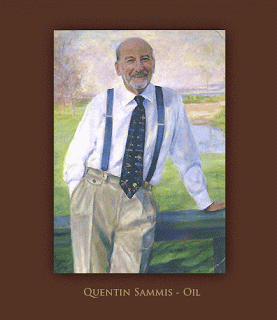
After much success in the world of fine art, Victoria has now followed her passion - blending her superb talent with a rich heritage of romanticism - making her exquisite pieces available to everyone, as the perfect gift for that special loved one.
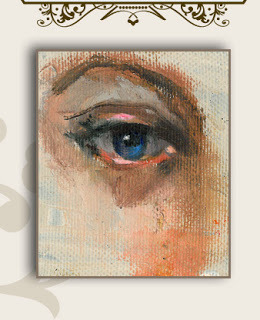
As Victoria recently explained -
"I first became aware of lover's eye when I saw one in either France or England. I fell instantly in love. I have worked as a commissioned portrait artist for the past 17 years. My goal as a fine artist is to communicate on a two dimensional canvas not only how that person looks, but who they are, the visual essence of the person. I found that if one were able to paint the feeling of the eyes in the portrait, then the commission was a success... that the soul, that life spark was in the painting of the eye.
"In today's modern world, people no longer commission an artist to paint a portrait of their love ones. Once one is exposed to the world of honoring, remembering and showing love through portraiture, most people would love to have one. Sadly for many the cost is beyond their budget.
"This made me realize that a relatively small amount of money, which would otherwise be spent on gifts such as flowers, lingerie or jewelery, one could commission an artist create a fine art painting of that person's eye - a lover's eye."
Victoria knows how much a lover's eye can mean to someone as a momento because she has a very special story of her own regarding these keepsakes -
"My fiance and I had been high school sweethearts who parted and went on to create big lives with children and careers. Then, the stars re-aligned and we discovered that we were both single again. I had been dating someone else and was about to send him my own lover's eye when Ron stepped back into my life and I just knew then that the other guy was not meant to receive this keepsake. It became very personal, as though I were sending a part of me. . . Ron was so touched by my lover's eye its now on his desk front center and is, he says, one of his most precious things."
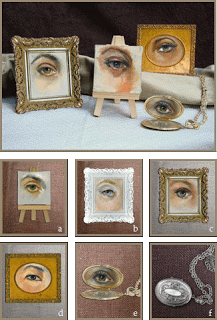
Victoria has been commissioned to paint several children's eyes and her eyes have become popular as wedding day gifts. You can find more examples of Victoria's work and read more about her at her website, My Lover's Eye.
Published on April 13, 2011 00:20
April 12, 2011
A Christening at Holdernesse House
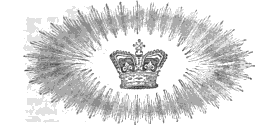 The Royal Lady's Magazine, and Archives of the Court of St. James'sApril 1831
The Royal Lady's Magazine, and Archives of the Court of St. James'sApril 1831Royal Court Fete at Holdernesse House
(the name was changed to Londonderry House in 1872)
The preparations for this unique and splendid entertainment were completed on Wednesday morning; and a brilliant illumination which was displayed in front of the Drawing-room suite of windows, was lighted by 6 o'clock. It consisted of the Shield of England, surmounted by a Royal Crown, with the word "Adelaide"
beneath, and enclosed by an immense wreath of laurel; every part being in the exact colours of the object sought to be represented; and on each side was a star, with the letters W. A. A Guard of Honour of a hundred men, commanded by Captains Hulse and Clinton, was stationed outside the mansion in readiness to receive the Royal visiters on their arrival. Considerably before six o'clock the whole of the select company invited to be present at the Christening and the Banquet had arrived, and were assembled in the grand yellow Drawing-room, where the ceremony was to take place. Before the above hour the Royal Family had also arrived, with the exception of the King and Queen.
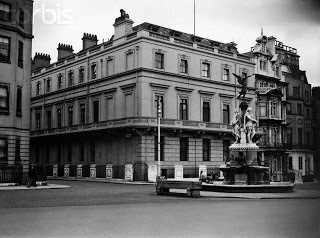 Holdernesse House
Holdernesse HouseAt length, shortly after six o'clock, her Majesty arrived. Her Majesty was accompanied by the Landgravine of Hesse Homburg, and attended by a numerous suite, and escorted by a guard of honour. On her Majesty's carriage drawing up at the door of Holdernesse House, the noble host, Lord Londonderry, advanced and assisted her Majesty to alight. The Queen then took the arm of Lord Londonderry. The Marchioness of Londonderry was waiting to receive her Majesty at the foot of the grand staircase, which her Majesty ascended leaning on the arm of Lord Londonderry, and was by him conducted to the Grand Drawing-room, where the company were assembled, and the Ceremony of the Baptism was to be performed. Her Majesty and the noble host were preceded to the drawing-room by Lord Castlereagh, the eldest son of Lord Londonderry, bearing wax-lights; and they were immediately followed, first by the Landgravine of Hesse Homburg and the Marchioness, and then by the ladies and gentlemen of her Majesty's immediate suite. During this period the vestibule and all the mansion resounded with the national anthem, which was played by the band of the 3d foot guards, stationed at the foot of the grand staircase.
Immediately on the arrival of the Queen and her suite, the ceremony of the christening was performed, by his Grace the Archbishop of York, who was assisted by the Rev. W. R. Wyatt, Lord Londonderry's chaplain. The infant is fifteen months old, and was named Adelaide Emmelina Caroline; the male sponsor to the ceremony being the Duke of Rutland; and the two female sponsors, the Queen and Lady Caroline Wood, sister to the Marchioness of Londonderry. After the ceremony was concluded, her Majesty presented to the infant a gift of a superbly-chased silver-gilt cup and stand.
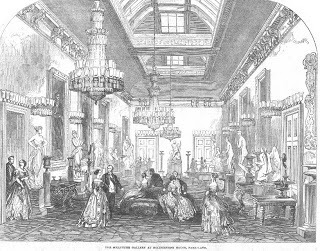 The Sculpture Gallery, Holdernesse House Immediately after the ceremony of the Baptism was concluded, the band in the vestibule struck up the national anthem, and the Queen was conducted by the Marquis of Londonderry into the Statue Gallery, where a splendid banquet was prepared. The banquet table was placed in the centre of the saloon, at the right hand of the noble host, in the centre of the table, on the side opposite the door,—not at either extremity. On the left of the Marquis was the Margravine of Hesse Homburg; and opposite to him the Marchioness of Londonderry was seated. The other guests were placed in the order of their precedence.
The Sculpture Gallery, Holdernesse House Immediately after the ceremony of the Baptism was concluded, the band in the vestibule struck up the national anthem, and the Queen was conducted by the Marquis of Londonderry into the Statue Gallery, where a splendid banquet was prepared. The banquet table was placed in the centre of the saloon, at the right hand of the noble host, in the centre of the table, on the side opposite the door,—not at either extremity. On the left of the Marquis was the Margravine of Hesse Homburg; and opposite to him the Marchioness of Londonderry was seated. The other guests were placed in the order of their precedence.The Dresses of some of the distinguished guests were splendid.
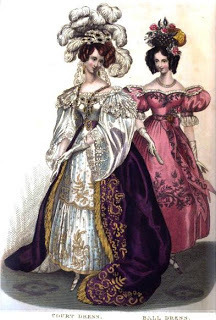
Her Majesty was attired in a rich white Monde dress over a satin slip; beautiful lace lappets. Head-dress of diamonds, and white ostrich plume; brilliant necklace and ear-drops.
The Landgravine of Hesse Hamburg.—A plain white crape dress, full lappets of white blonde, and bandeau and bouquet of brilliants.
The Duchess of Cumberland.—A white blonde and satin dress, richly embroidered with gold, a beautiful crimson cashmere beret, with an embroidery in front, composed of brilliants, and necklace also of brilliants.
The Duchess of Gloucester.—A white crape dress over satin slip. Head-dress of beautiful pearls.
The Princess Lieven.—A pink crape dress, richly embroidered in silver lama, and the body very handsomely ornamented with diamonds. Head-dress, a pink terry velvet beret, with feathers and brilliants.
The Marchioness of Londonderry. — A beautiful white blonde-lace dress over a while satin slip; a isone entirely composed of brilliants. Head-dress, brilliant garland of diamonds, with a comb ornamented with large pearls ; an eselavage necklace, composed of immense pear-shaped pearls and diamonds. Her Ladyship also wore a bouquet of costly brilliants at her left breast, and three rows of pearls suspended from the left epnulette by a lozenge of brilliants, terminating on the right side towards thejwaist. Head-dress, an immense tiara of diamonds, surmounted by moveable pieces, with a plume of fifteen rich ostrich feathers. The most conspicuous part of this nttire was the zone or cincture of brilliants, full two inches in width, and consisting of one entire mass of brilliants, divided only by the invisible setting of each.
The Duchess de Dino.—A blue "Arabesque" gauze and gold robe, elegantly trimmed with feathers and vine-leaves; plume of ostrich feathers, with brilliants.
The Marchioness of Salisbury.—A very rich white satin dress, trimmed with oriental gold. Corsage trimmed with rich blonde lace; enamels and diamonds. Head-dress, ostrich feathers and diamonds.
Countess of Jersey.—A grenat and white gauze dress, " crochettee" with gold, trimmed with gold ribbon and aiguillettes, feathers.
Lady Robert Peel.—A tulle blonde dress, elegantly trimmed with white and gold gauze ribbon. A white crape hat and feathers, ornamented with costly diamonds.
Lady Ann Beckett.—Rich white satin dress embroidered with gold; a profusion of beautiful diamonds, and a splendid plume of ostrich feathers.
Lady Sophia Lennox.—A white satin dress, neatly and tastefully trimmed with silver lama; a rich and delicate plume of white ostrich feathers, with diamonds.
The Duke of Gloucester.—A. military full uniform.
The Duke of Sussex.—The full Windsor uniform, with several orders.
Prince Leopold.—In the uniform of a British Field Marshal.
The Prince of Orange.—The same.
Prince Talleyrand.—A richly embroidered' Court Dress, with several orders.
Prince Esterhazy.—A splendid Austrian Hussar Uniform.
The Duke of Devonshire.—A richly embroidered Court Dress, of the most costly description, with the ribbon of the Order of the Garter, and a garter embroidered with beautiful brilliants; and several diamond stars of different orders and diamond epaulettes, and diamond knee and shoe buckles. As Lord Chamberlain, his Grace wore the gold key.
Note: Holdernesse/Londonderry House stood in Park Lane, London, and was demolished in 1962.
Published on April 12, 2011 01:45
April 11, 2011
Upstairs, Downstairs
OMG! They've cut scenes from the original, the most important to U/D fans being Rose's return to Eaton Place. A scene loaded with memories and pathos. You may recall I had the scene up in the sidebar last week. Click here to see it,so that you shan't be denied. Philistines!
Now that I've got that off my chest, I must say that I love Maud, world traveler and owner of an adorable monkey. They've taken the ubiquitous "crotchety, severe old matriach of the family" and changed her up into a delicious and fiesty lady who deserves more screen time. I'll teach you to smoke, indeed!
What did you think of last night's episode?
Now that I've got that off my chest, I must say that I love Maud, world traveler and owner of an adorable monkey. They've taken the ubiquitous "crotchety, severe old matriach of the family" and changed her up into a delicious and fiesty lady who deserves more screen time. I'll teach you to smoke, indeed!
What did you think of last night's episode?
Published on April 11, 2011 04:09
The Ill Fated Marriage of The Duke of Wellington - Part Two
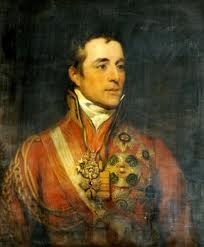
Whilst the Duke possessed many laudable qualities, the ability to be a great husband and father was not amongst them. He treated Kitty rather coldly beginning very early in their marriage. Some say it was because he found out after the fact that Kitty had engaged herself to another suitor prior to Wellington's return, and had thrown that young man over in favour of Wellington who, by this time, had fair amount of fame, a growing fortune, a title and glittering prospects. Supposedly, Wellington found the fact that Kitty herself did not disclose this fact to him deceitful. His great good friend Lady Shelley wrote of Wellington at the end of her life, "As he never deviated from the truth himself, he scorned deceit or equivocation in others. Whenever he caught any one out in telling him an untruth, he was extremely harsh and severe."
However, there is evidence (still being pursued by Kristine and Victoria) that some great bruhaha took place early in their marriage involving something to do with Kitty's family; something along the lines of her having lent them a goodly amount of money and hiding the fact from Wellington. In fact, Wellington thenafter forbade Kitty's ever taking their sons to Ireland with her again. She was free to visit her family whenever she wished - the boys were not. Exactly what the fracas was about is still shrouded in mystery, but the fact remains that Wellington was a cold and distant husband to Kitty.
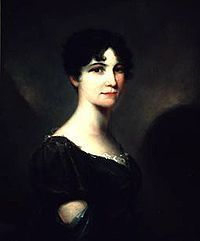
Harriet, Mrs. Arbuthnot
As referred to in Part One, Wellington's close friends found it difficult to conceive that he'd ever married Kitty, who was naturally shy and further inhibited by the hero worship she felt for her husband. At least one of his intimate friends, Harriet Arbuthnot, questioned him about the odd match, as we read in The Journal of Mrs. Arbuthnot, Volume I -
"He assured me he had repeatedly tried to live in a friendly manner with her . . but tht it was impossible, that she did not understand him, that she could not enter with him into consideration of all the important concerns which are continually occupying his mind and that he found he might as well talk to a child . . . . she made his house so dull that nobody wd go to it while, whenever he was in town alone . . . everybody was so fond of his house that he could not keep them out of it . . . .
" . . . I could not at last help saying to him that the more I knew him the more was I unable to recover from my astonishment at his having married such a person . . . He said, "Is it not the most extraordinary thing you ever heard of! Would you have believed that anybody could have been such a d -----d fool?"
Now, Reader, here is the part in which the mystery lies - Mrs. Arbuthnot relates the story of Lady Olivia Sparrow's interference, of Wellington telling her that at that time he "did not care a pin about any one else or what became of himself" and his going to Ireland and marrying Kitty and then Mrs. A. continues:
"I told him that in all my life I had never heard of anybody doing so absurd a thing, that there could be but one justification, his having been desperately in love with someone who had ill-used him and being in a state of desperation at the time, and even for that he was too old. He agreed cordially in my abuse of him and said I could not think him a greater fool than he did himself."So . . . . with whom had Wellington been in love? Who had broken his heart? Victoria and Kristine continue to pursue this burning question, as well . . . .
It should be noted that the Duchess of Wellington died in the Duke's London residence, Apsley House, on 24 April 1831. In the days before her death, the Duke was devoted to her needs and never left her side. In the end, he regretted that they were able to achieve a meeting of minds only at the end of her life.
Published on April 11, 2011 00:54
April 10, 2011
The Ill Fated Marriage of The Duke of Wellington
On 10 April 1806 took place the marriage of Arthur Wellesley to Catherine Sarah Dorothea Pakenham, third daughter of the Earl of Longford. This is, perhaps, the strangest marriage I've come across in the annals of Georgian, Regency and Victorian alliances . No two people were ever more ill suited to spend their lives together (unless it be the Prince of Wales and Princess Caroline) and no other couple had less in common, either in the way of interests or personality. So marked was the disparity between them that many of their contemporaries wondered at the alliance. That Wellington, a man so careful in his actions and attitudes, should have willingly made such a bad match for himself beggars belief. In fact, as we shall see, Wellington himself could hardly credit it.
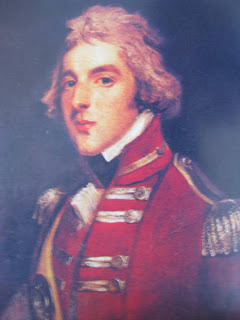
On 7 March 1787, Wellesley was gazetted ensign in the 73rd Regiment of Foot. In October, with the assistance of his brother, he was assigned as aide-de-camp, on ten shillings a day (twice his pay as an ensign), to the new Lord Lieutenant of Ireland Lord Buckingham. He was also transferred to the new 76th Regiment forming in Ireland and on Christmas Day, 1787, was promoted to Lieutenant. During his time in Dublin his duties were mainly social; attending balls, entertaining guests and providing advice to Buckingham. While in Ireland, he over extended himself in borrowing due to his occasional gambling, but in his defence stated that "I have often known what it was to be in want of money, but I have never got helplessly into debt."
Two years later, in June 1789, he transferred to the 12th Light Dragoons, still as a lieutenant and according to his biographer, Richard Holmes, he also dipped a reluctant toe into politics becoming an MP for Trim in the Irish House of Commons and in 1791 he became a Captain and was transferred to the 18th Light Dragoons. During this time, he met and wooed Catherine (Kitty) Pakenham, the daughter of Edward Pakenham, 2nd Baron Longford, who was described as being full of 'gaiety and charm.' Wellington offered for her hand in marriage in 1793 and was summarily refused by Kitty's brother Thomas, Earl of Longford, who saw nothing very much in the young Wellesley to recommend him to the family, as he had a number of debts, poor professional prospects and no sign hung round his neck that read, "Future Duke of Wellington, Incredibly Wealthy, In Charge of Everything."
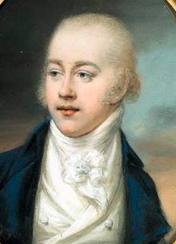 Thomas, Earl Longford
Thomas, Earl Longford
Arthur Wellesley, or Wesley, as he then styled himself, then left Dublin for active service in the Netherlands and apparently did not look back on his lost love. Nowhere in his correspondence for the interceding 12 year interval does he make any reference to Catherine Pakenham, or does a letter to or from her exist.
Then, we are to believe that Wellesley went to spend his leave at Cheltenham and met a mutual friend, the busybody and yenta Lady Olivia Sparrow, who twitted him with heartlessness to her bosom friend "Kitty Pakenham," and assured him that his ladylove had never changed.
"What!" Wellesley was purported to exclaim, "does she still remember me ? Do you think I ought to renew my offer? I'm ready to do it."
Supposedly, he then wrote at once to Miss Pakenham, renewing his proposal of marriage. She replied that, as it was so long since they had met, he had better come over and see her before committing himself, lest he should find her aged and altered. Sir Arthur replied that minds, at all events, did not change with years and hastened over to Ireland. Though, upon again laying eyes on Kitty, he was said to have exclaimed, "She has grown ugly, by Jove!" they were married by Wellesley's clergyman brother Gerald in Lady Longford's drawing room in Dublin.
Part Two Coming Soon!

On 7 March 1787, Wellesley was gazetted ensign in the 73rd Regiment of Foot. In October, with the assistance of his brother, he was assigned as aide-de-camp, on ten shillings a day (twice his pay as an ensign), to the new Lord Lieutenant of Ireland Lord Buckingham. He was also transferred to the new 76th Regiment forming in Ireland and on Christmas Day, 1787, was promoted to Lieutenant. During his time in Dublin his duties were mainly social; attending balls, entertaining guests and providing advice to Buckingham. While in Ireland, he over extended himself in borrowing due to his occasional gambling, but in his defence stated that "I have often known what it was to be in want of money, but I have never got helplessly into debt."
Two years later, in June 1789, he transferred to the 12th Light Dragoons, still as a lieutenant and according to his biographer, Richard Holmes, he also dipped a reluctant toe into politics becoming an MP for Trim in the Irish House of Commons and in 1791 he became a Captain and was transferred to the 18th Light Dragoons. During this time, he met and wooed Catherine (Kitty) Pakenham, the daughter of Edward Pakenham, 2nd Baron Longford, who was described as being full of 'gaiety and charm.' Wellington offered for her hand in marriage in 1793 and was summarily refused by Kitty's brother Thomas, Earl of Longford, who saw nothing very much in the young Wellesley to recommend him to the family, as he had a number of debts, poor professional prospects and no sign hung round his neck that read, "Future Duke of Wellington, Incredibly Wealthy, In Charge of Everything."
 Thomas, Earl Longford
Thomas, Earl LongfordArthur Wellesley, or Wesley, as he then styled himself, then left Dublin for active service in the Netherlands and apparently did not look back on his lost love. Nowhere in his correspondence for the interceding 12 year interval does he make any reference to Catherine Pakenham, or does a letter to or from her exist.
Then, we are to believe that Wellesley went to spend his leave at Cheltenham and met a mutual friend, the busybody and yenta Lady Olivia Sparrow, who twitted him with heartlessness to her bosom friend "Kitty Pakenham," and assured him that his ladylove had never changed.
"What!" Wellesley was purported to exclaim, "does she still remember me ? Do you think I ought to renew my offer? I'm ready to do it."
Supposedly, he then wrote at once to Miss Pakenham, renewing his proposal of marriage. She replied that, as it was so long since they had met, he had better come over and see her before committing himself, lest he should find her aged and altered. Sir Arthur replied that minds, at all events, did not change with years and hastened over to Ireland. Though, upon again laying eyes on Kitty, he was said to have exclaimed, "She has grown ugly, by Jove!" they were married by Wellesley's clergyman brother Gerald in Lady Longford's drawing room in Dublin.
Part Two Coming Soon!
Published on April 10, 2011 00:53
Kristine Hughes's Blog
- Kristine Hughes's profile
- 6 followers
Kristine Hughes isn't a Goodreads Author
(yet),
but they
do have a blog,
so here are some recent posts imported from
their feed.



